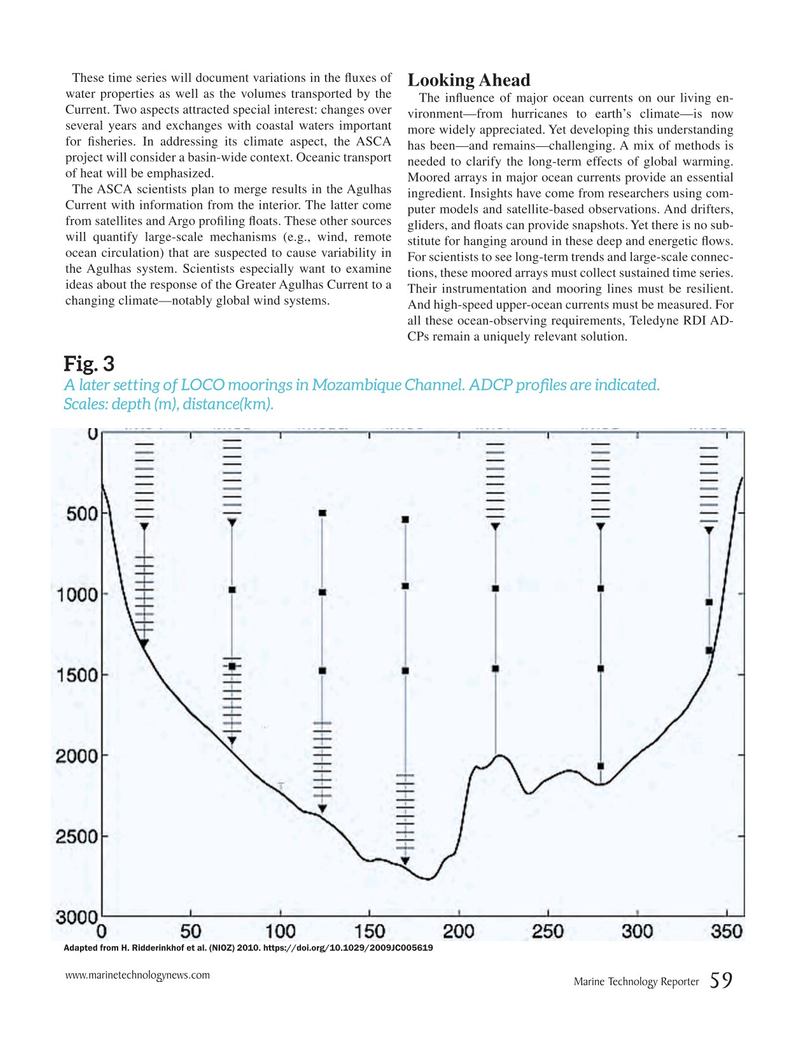
Page 59: of Marine Technology Magazine (November 2018)
Acoustic Doppler Sonar Technologies ADCPs and DVLs
Read this page in Pdf, Flash or Html5 edition of November 2018 Marine Technology Magazine
These time series will document variations in the ? uxes of
Looking Ahead water properties as well as the volumes transported by the The in? uence of major ocean currents on our living en-
Current. Two aspects attracted special interest: changes over vironment—from hurricanes to earth’s climate—is now several years and exchanges with coastal waters important more widely appreciated. Yet developing this understanding for ? sheries. In addressing its climate aspect, the ASCA has been—and remains—challenging. A mix of methods is project will consider a basin-wide context. Oceanic transport needed to clarify the long-term effects of global warming. of heat will be emphasized.
Moored arrays in major ocean currents provide an essential
The ASCA scientists plan to merge results in the Agulhas ingredient. Insights have come from researchers using com-
Current with information from the interior. The latter come puter models and satellite-based observations. And drifters, from satellites and Argo pro? ling ? oats. These other sources gliders, and ? oats can provide snapshots. Yet there is no sub- will quantify large-scale mechanisms (e.g., wind, remote stitute for hanging around in these deep and energetic ? ows. ocean circulation) that are suspected to cause variability in For scientists to see long-term trends and large-scale connec- the Agulhas system. Scientists especially want to examine tions, these moored arrays must collect sustained time series. ideas about the response of the Greater Agulhas Current to a Their instrumentation and mooring lines must be resilient. changing climate—notably global wind systems.
And high-speed upper-ocean currents must be measured. For all these ocean-observing requirements, Teledyne RDI AD-
CPs remain a uniquely relevant solution.
Fig. 3
A later setting of LOCO moorings in Mozambique Channel. ADCP pro? les are indicated.
Scales: depth (m), distance(km).
Adapted from H. Ridderinkhof et al. (NIOZ) 2010. https://doi.org/10.1029/2009JC005619 www.marinetechnologynews.com
Marine Technology Reporter 59
MTR #9 (50-63).indd 59 MTR #9 (50-63).indd 59 11/28/2018 11:01:44 AM11/28/2018 11:01:44 AM

 58
58

 60
60
